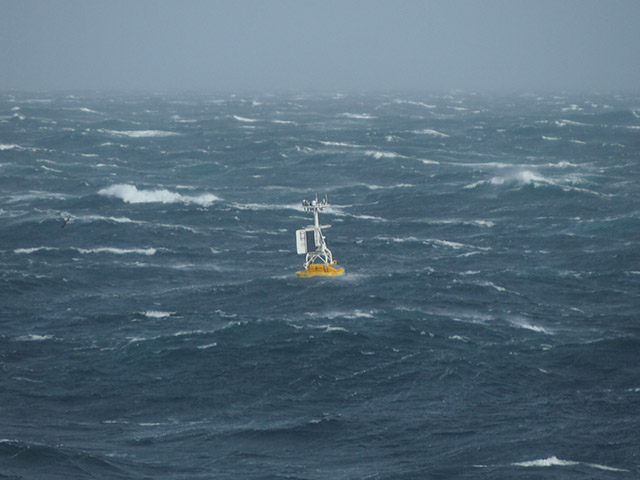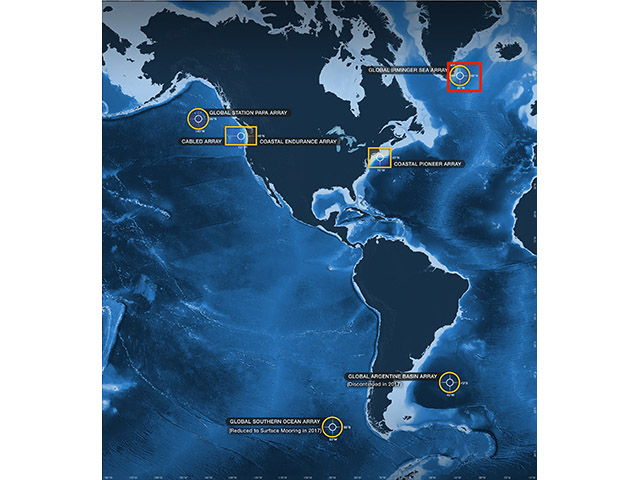Thermohaline Circulation Invention
Your Objective
Identify the processes that produce the cold, dense seawater in the Irminger Sea and which drives the thermohaline circulation.
- Make a prediction about the relationship between surface wind speed and near-surface water temperature.
- Make a prediction about the relationship between near-surface water temperature and water density.
Specify CTD depths to plot:
Show:
Data Tips
When the site loads, you are able to see the full dataset of wind speed, seawater temperature, and seawater density for the POR of 2014-09-21 to 2018-06-17 from the Irminger Sea Flanking Mooring B and ECMWF reanalysis grid point. You can interact with the data by:
- Turning on and off the various layers of temperature, density, and speed. If a reference layer is needed, I suggest the ECMWF wind speed OR the 30m temperature.
- Zoom in and out of the data to highlight particular sections of the seasonal cycle. Site loads with all data highlighted, change highlighted width with zoom.
Questions for Thought
- What oceanic and atmospheric variables are displayed in the graphs? What are the units associated with each variable?
- What time period does the graph cover?
- What is the starting date?
- What is the ending date?
- How many complete years of data are represented?
- What graph type is this?
- What happens to the near-surface temperature as the wind speed increases in the winter?
- Cooling temperatures imply a loss of heat energy from the water. Where does this heat go?
- What happens to the water density as the temperatures cool?
- Examine the potential density plots for all depths. Are they similar? What does this imply about the vertical movement of the water?
- Describe in your own words how the wintertime conditions in the Irminger Sea produce the deep water which forms part of the thermohaline circulation.
Background Information
Click on the images below to learn more about where and how the dataset above was collected.
Dataset Information
The data for this activity was obtained from the following CTDs on the Irminger Sea Flanking Mooring B:
- 30m - GI03FLMB-RIM01-02-CTDMOG060
- 90m - GI03FLMB-RIM01-02-CTDMOG063
- 350m - GI03FLMB-RIM01-02-CTDMOG067
- 1000m - GI03FLMB-RIM01-02-CTDMOH070
Recovered datasets were downloaded from the OOI data portal, and then daily (mean) averages of temperature and density were calculated and merged together into a single file. Potential temperature and potential density were calculated using the seawater toolbox.
Because the meteorological data from the Irminger Surface Mooring is rather sparse, wind speed and air temperature data was obtained from the ECMWF reanalysis at the closest grid points (between 59-61°N and 40-38°W).
The highlighted boxes represent those time periods where the difference between the 350m and 30m potential density is less than 0.05 kg/m3. This effectively highlights those time periods when the mixed layer depth reaches far below the surface.
See this Jupyter Notebook for details on how the data for this activity was processed.
Activity Citation: Dixon, R., Beaird, N., & Lichtenwalner, C. S. (2019). Thermohaline Circulation. OOI Data Labs Collection.


